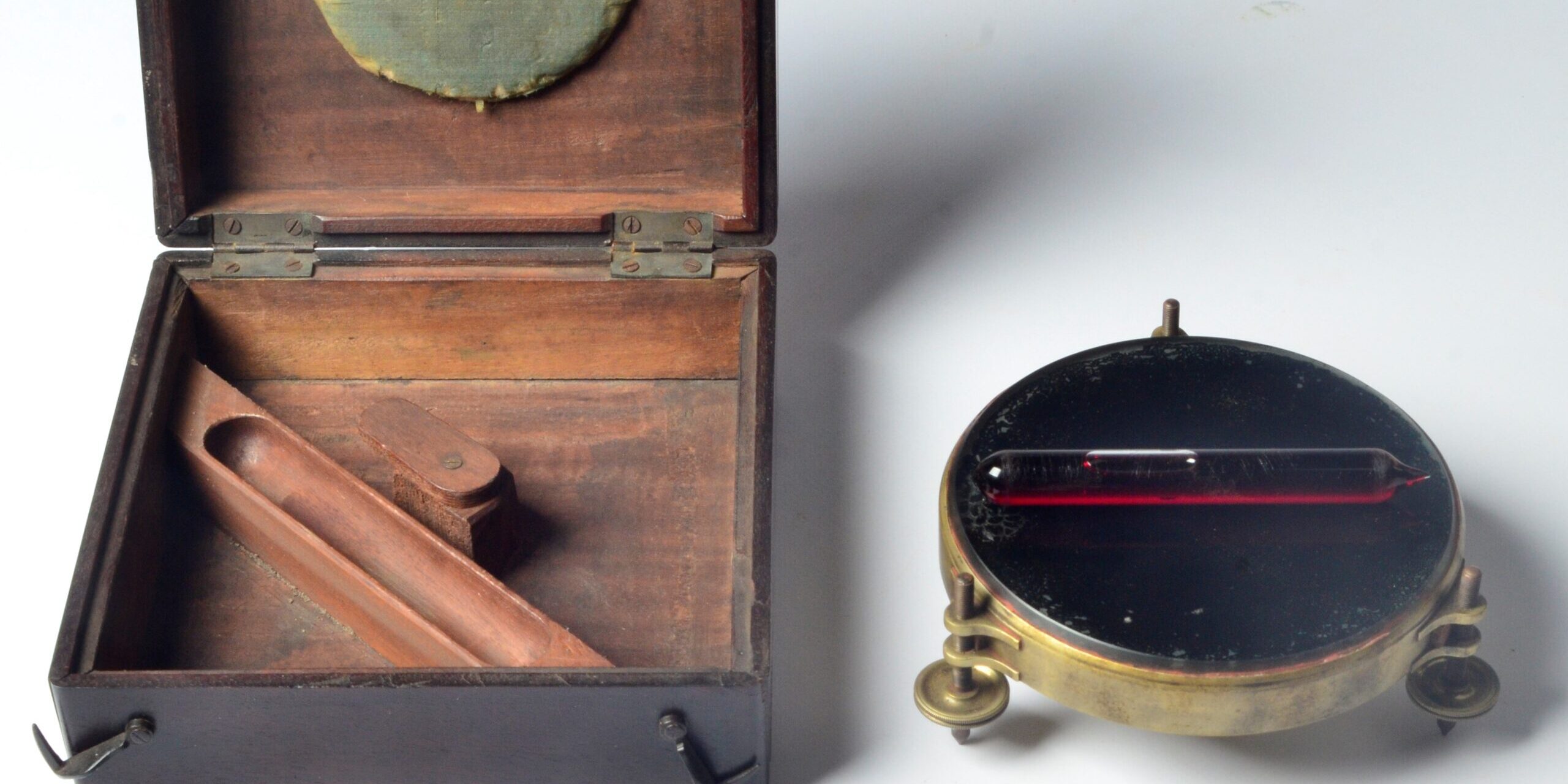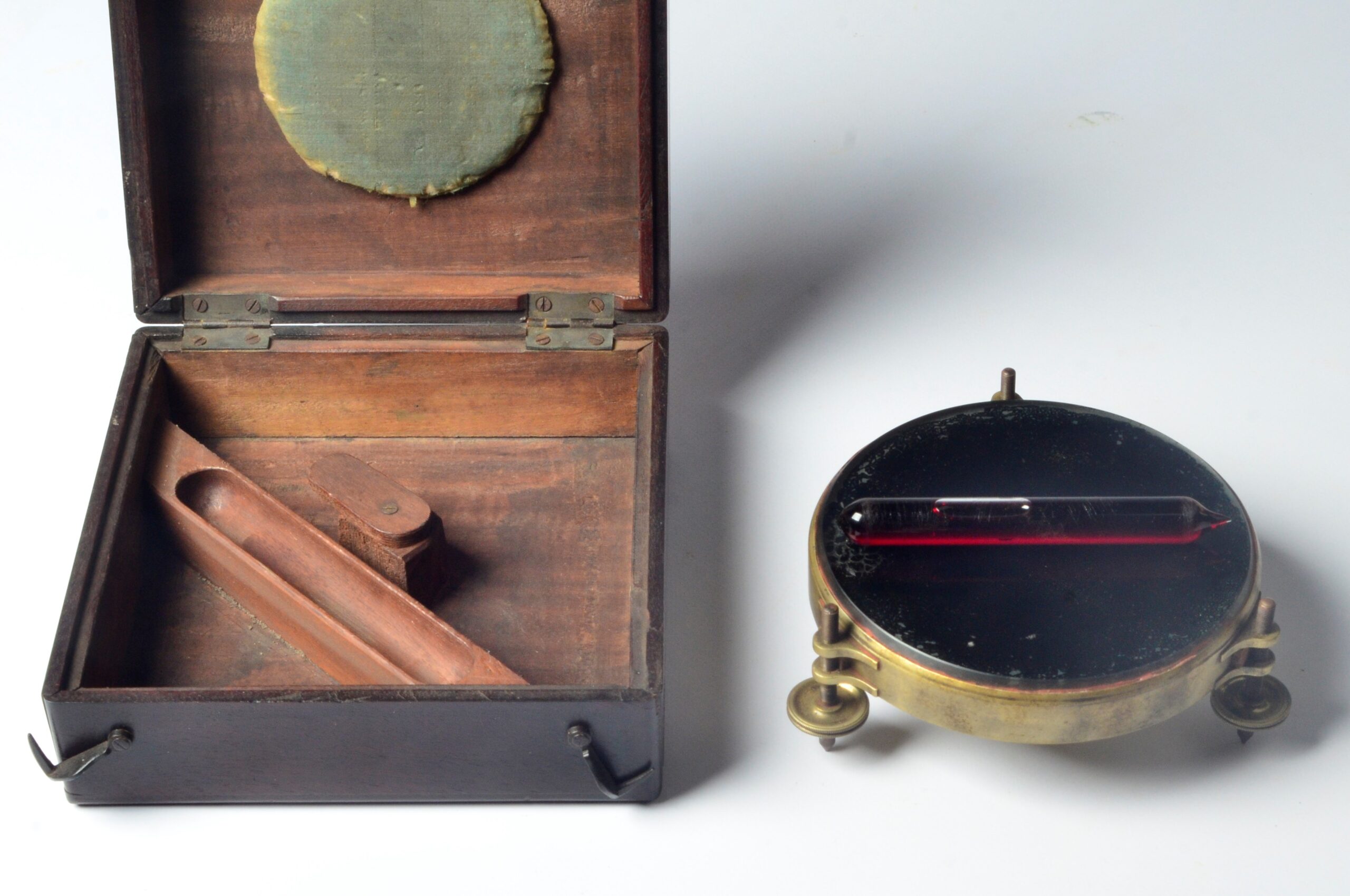Artificial black glass horizon – circa 1800
The artificial horizon was designed for use when the natural horizon is not visible due to weather conditions or darkness. It is used in conjunction with a sextant. The angle of reflection of a celestial body on the mirror is equal to the angle of incidence.
The history of the artificial horizon dates back to the sixteenth century, but development really got underway in the eighteenth century. George Adams designed the mercury trough in 1738 to prevent the swinging of the mercury during the movement of a ship.
This early and particular example consists of a glass plate with a black background mounted in brass tray with three adjusting screw bolts to level the instrument. A wooden ‘brake’ is fitted behind the bolts to prevent unwanted twisting. The horizon is housed in a mahogany box with a hinged lid with hook and eye catchers. The bubble level glass is missing.
Catalog: NM.6-08
Date: ca.1800
D glass: 13.5 cm
HWL case7.5×17.3×17.3 cm
Signed: not signed
Origin: England
Condition: in good and working condition, wear consistent with age and use








